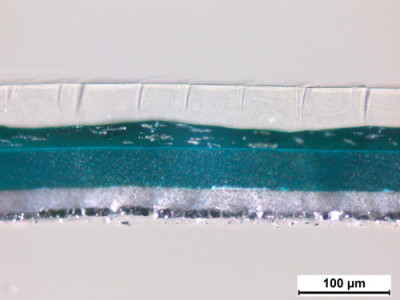Paint and Tape
Paint is utilized in so many applications that it is difficult to detail the range of analytical questions we have addressed; however, some of the more typical questions we are asked to address include the following:
Forensic Paint Analysis
Forensic paint analysis typically involves comparing two paint samples, a questioned and known sample. However, in instances where no known sample is available, we assist our clients by conducting investigative analyses. In these cases, it may be possible to specify a particular paint manufacturer or even a particular type of vehicle. Our experience spans consumer and commercial automotive paints, architectural paints, spray paints, high-end industrial coatings (such as powder coats), as well as marine paints.
Sample size is rarely an issue, even in cases of smears. One of our biggest success stories, which involved the isolation and identification (to the manufacturer of the paint) of minute specs of spray paint, was critical in eliciting the confession of Gary Ridgway, the Green River Murderer. In addition to casework, Microtrace teaches courses, gives presentations, and conducts research on forensic paint analysis.
Tape
Tape, like many paints, is often a multilayered composite material that may be comprised of polymers, colorants, reinforcing fibers, fillers, and adhesives. Microtrace has expertise and a proven track record in successfully characterizing each of these components. In a forensic context, this information can be combined to either identify a particular type of tape or compare questioned and reference tape samples.
Commercial Paint Ingredient Characterization
Modern paints are formulated with a number of components including binders, additives, extenders, and pigments. Chemical, spectroscopic, and micromorphological characterization of these components, both in situ and from raw ingredients, have been conducted to assist with development and quality control issues such as paint performance, delamination, and chalking.
Lead in Paint and Pigments
Leaded pigments, typically in the form of lead chromates or lead carbonates, can be definitively identified by a variety of methods, depending on the specific parameters of a case. Such information can be helpful in establishing facts during civil litigation surrounding the historical use of lead pigments in paints.
Artist Paints
The characterization of artist paints typically focuses on the identifications of the binders and the pigments. Such identifications can typically be made from a minute sample. See our page on art and antiquities for further discussion.
Related Standardized Methods: ASTM E1610, E2808, E2809, E2937
How May We Help You?
Contact usto discuss your project in more detail.








